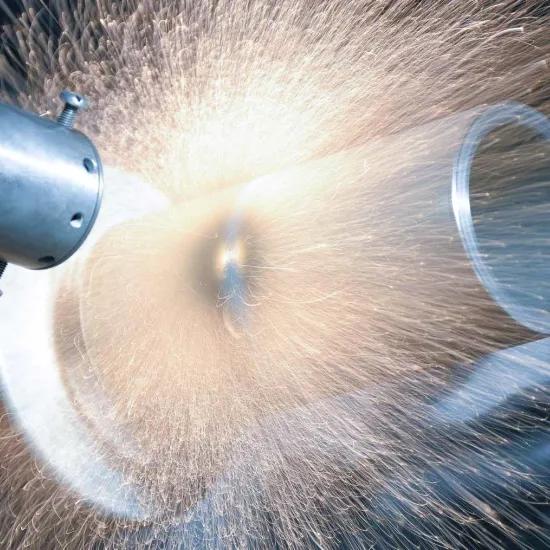When setting up activities in the inner circles of the circular economy - remanufacturing, refurbishing, retrofitting, repair, parts harvesting, etc.- there is a need for cooperation between companies. In almost all cases, there are activities that cannot or will not be carried out by one single organisation. So, as a first step, you need to find the right partner(s) to set up a successful collaboration. In this article, we will discuss how to detect and find the right partner(s).
The best way to carry out activities, such as collection of cores and end-of-life products, value assessment of these products , dismantling, value-preserving transport, de-assembly, repair, upgrade and test, resale and installation, ... is to do them together with the right partner(s).
Before you start
Before you can set off in your search for a partner, it is key to understand the value chains in which you want to become active. In many cases there is already some activity and actors taking up remanufacturing activities. Depending on where you are situated in the value chain, you might have a different perspective on this topic. It is wise to try to visualise other actors and their perspectives. To inspire you and have your orientation started you can have a look at some simplified value chain representations, which you can find here.
By splitting the remanufacturing into three sequential phases, you can structure your knowledge and insights. Most organisations find it useful to follow this structure:
Product inflows (cores): This first phase relates to all activities and knowledge needed to unlock the potential. It is about the volume that can be remanufactured, the quality of products after their first use phase, and how collection can take place.
The remanufacturing operational process: Here the ‘real’ physical operational activities of remanufacturing (upgrade, refurbish, spare parts harvesting,…) take place and it includes incoming inspection, cleaning, disassembly, repair, re-assembly, testing, packaging, etc.
The outflow of products and/or parts (sales): This phase is about putting the products again into the market. It includes activities such as setting up sales channels (sales platform, …), pricing, distribution, sales of product related service, ...
Step 1: Know yourself
The first and most important action is to determine your aim or goal. Before you can go out and search for partners, make sure you have your circular ambition clear. This sounds vague, but is important. Try to describe what you and your company stand for. You will later see that this is the ultimate enabler to find a ‘click’ with a potential partner. Since, for your company as well as the potential partner company, remanufacturing activities might be new and require new collaborations, a common ground is needed. Therefore, building trust from the start is vital. Sharing believes and ambitions between partners provides trust and willingness to take the collaboration a step further.
Now it is time to identify your strengths in relation to the three remanufacturing phases, as described above (Product inflow, Operational processes, Outflow of product).
Make a list of what you are good at. A service-oriented organisation (such as a repair or maintenance provider) will most probably start with the operational aspects, while an OEM might start with the product inflow based on product and sales knowledge, access to inflow and/or customer demand.
Try to list your company strengths on multiple aspects: knowledge, capabilities, technology, access to networks, infrastructure, tools, access to customer segments or to other actors in the value chain,…
It might be helpful to have a look at some templates or question lists when doing this exercise.
Templates that might help finding your strengths:
- Success analysis as preparation for collaboration
- Remanufacturing exploration starting from archetypes.
List of relevant questions:
Once you know your strengths, you can also see phases in which you will need (new) partnerships.
Step 2: Get out of your comfort zone: search, talk, listen and build relations
Again some preparation is useful. Making a list of potential partners is a wise first action. You can make such a list based on some basic criteria. For example: geographical location, product or activity type or infrastructure (remanufacturing of electronics might need different actors than remanufacturing heavy duty steel casted parts).
Based on this list you can start contacting potential partners. Be aware of a common pitfall: do not sell your capabilities, do not request a perfect solution yet. During the first contacts, focus on organisations that have a similar mindset. It is in the first place about finding partners with activities, interest and capabilities in a remanufacturing phase you are currently unfamiliar with. Potential partners that you trust, partners that have a similar goal and persons that provide you with energy and drive. This is where you can use your preparation on your ambition and goals.
So it is time to get out of your company, time to start communicating with the outside world: take the phone, go to events, join learning networks, …
More important than a perfect list of capabilities is having a good story that makes you attractive. Talk about your goals and ambitions and how you see remanufacturing activities fit your organisation. Exchange your ideas and ask questions, and above all, listen to learn, to better understand the needs from the partner.
|
Step 3: Interacting, exchanging, learning and make it match
When you found your partner the discussion is open. The good news is there is enough trust to share some more information and details. Now the key point is not to use your competence list as a checklist that should match the needs of your partner. In practice, the chance that you and your partner have a perfect match right from the start, is close to zero. In most cases it is about building trust so that both parties are willing to adapt, improve, change their processes to build real complementary activities. Your strengths list is there to encourage your potential partner. To illustrate that a next step can be taken with a relative low risk. Try to explore what capabilities might need additional attention to enable collaboration. Try to translate the open issues to a concrete short term action in which both partners are involved and can learn from, like a first physical test, a mutual company visit, test a technology, …
|
Would you like to know more about setting up remanufacturing activities? Visit our Cirkel platform.
If you struggle with this topic, don't hesitate to contact us, so that we can support you in your search for partners.






